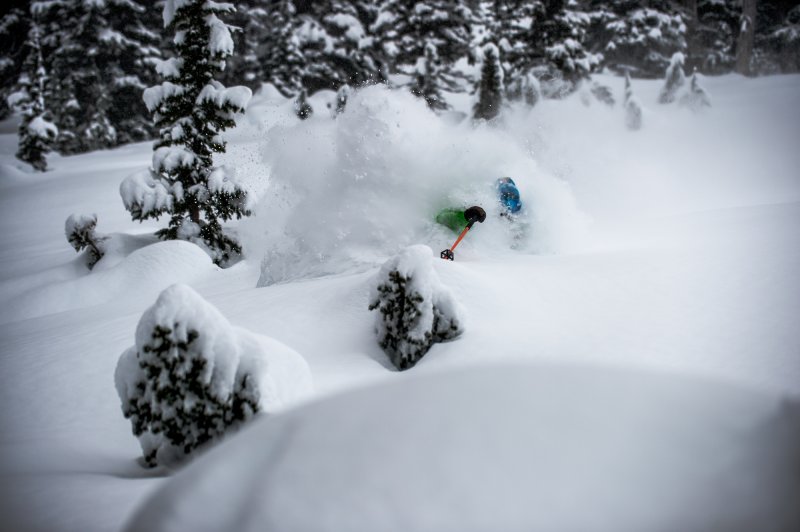Featured Adventure
La Nina / El Nino - what does it all mean?
Elemental Adventure •
After years of trying, we have finally mastered the art of making accurate predictions: Look out the window or down from the chair lift in the morning and you’ll be right every time. Early season always brings plenty of predictions about the winter ahead and often they are linked to the effects of El Niño or La Niña. We’re not sure how much use they are but for what it’s worth here’s a quick dip into what it might mean.

Could an El Niño winter look like this? Image: Reuben Krabbe, Last Frontier Heliskiing
Since 2020, the Northern Hemisphere has experienced a La Niña streak for three consecutive winters. This natural climate phenomena is when the Pacific Ocean surface temperature falls below normal levels which, in turn, influences global weather patterns. It is linked to increased precipitation and colder temperatures…music to a ski enthusiast’s ears.
Are the many ‘snowiest season in history’ titles seen over the last 3 years attributed to the La Niña pattern – or simply a magic arrow from Ullr’s bow? Looking back at the 2022/23 winter, resorts in the Northwestern states reported monumental amounts of snow. For example, Palisades Tahoe had 180% of their average season snowfall… that’s over 18 metres (59 ft) of white fluffy stuff[1]. If that sounds like a lot, Alta in Utah recorded a massive 23 metres (75 feet) smashing the old record by nearly 4 metres (12.5 feet). That 4 metres alone is what many European resorts would hope to see during an entire season!
Further east, Grand Hirafu, in Japan recorded 13.55 metres of snowfall at its 815m recording station; the 2021-22 total being 13.35m and the mega-2020-21 season being 15.03m[2]. Interestingly, in British Columbia, the 22-23 winter was significantly below average for resorts such as Whistler and Revelstoke with many of the storm cycles delivering minimal snow. However, this did mark the end to three years of above-average winters to 2022[3]. These consistent powder trends dominating winter weather have been linked to La Niña by a number of weather forecasters[4].
Back here in the French Alps, it’s fair to say that the last couple of winters have been very poor. Looking up the mountains last February you could have been forgiven for thinking it was June!
Looking forward, what should we expect? Summer had us entering an El Niño cycle, La Niña’s alter ego. The warming of the Pacific’s surface typically causes a global temperature increase and experts say it is likely to contribute to making 2024 the world’s hottest year… not exactly what you want to hear when you’re finalising your ski trip plans for next season. But so far from our perspective sitting here in Chamonix, it’s worked out pretty well!
But before all excitement evaporates, let’s look at El Niño and what it might mean for snow. El Niño events usually last between 9-12 months peaking around December with the last El Niño phase being in 2019. Lower accumulative snowfall was certainly reported during the 18-19 season in many places. Historically, El Niño years have a tendency to have a colder winter impact on northern Europe and a greater-than-average snowfall in the Southern Rockies[5]…. Of particular interest to heliskiers, British Columbia is tends to be warmer (not always a bad thing) with less snowfall particularly in southern BC.
What does it all mean for your winter plans? We’d say, don’t get too excited. Let the experts make their predictions...Meanwhile cross your fingers and hope for the best!
[1] https://blog.palisadestahoe.com/conditions/april-2...
[2] powderlife.com/blog/niseko-records-second-highest-snowfall-in-a-decade-over-powder-season/
[3] https://opensnow.com/news/post/2023-2024-revelstok...
[4] Japan Meteorological Agency (JMA). National Oceanic and Atmospheric Administration (NOAA).
[5] https://www.euronews.com/green/2023/09/03/will-eur...
opensnow.com




